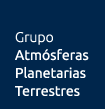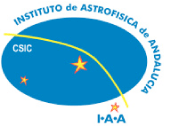MIMA

The portraits of the MLT structure by circulation models and of its change by climate forecastings rely upon a good knowledge on GWs (Smith et al., 2017). Larger attention is being paid to their manifestation at regional scales. GWs are resolved from ground airglow data, from which their properties and their variability can be derived. Information on GW vertical propagation may also be achieved from observations of contiguous atmospheric layers. Combination with other ground instruments and satellite data is used to understand GW regional behaviour in the context of the surrounding atmosphere.
A team of IAA-CSIC engineers, lead by Dr. García-Comas and Dr. López-González and in colaboration with the York University, are constructing the Multi-spectral Imager of Mesopause Airglow (MIMA) for monitoring the mesopause and its variability, as support for space-based instrumentation, and for studying regional GWs. The instrument is funded by the Ministry of Science of Spain through a competitive call. MIMA is a spectrometer that will continuously image the nighttime airglow and temperatures, allowing for the analysis of regional GWs, PWs and tides around the mesopause. It is a cost-effective instrument, heritage of the Spectral Airglow Temperature Imager (SATI; Sargoytchev et al., 2004), with enhanced performance, sensitivity, temporal and spatial resolutions, and extended spectral coverage. MIMA will stand at the Observatorio de Sierra Nevada relieving SATI (operating since 1998) and thus filling the gap the later will eventually leave over Eastern Andalusia within the Network for the Detection of Mesopause Change (NDMC). Fully automatic and remotely operated, the instrument is designed to fulfill stability requirements within 0.2% per decade that will allow measuring trends accurately. It is designed to be affordably maintained, repaired and repeated. MIMA is planned to cover at least two solar cycles of operation (with proper maintenance), for addressing satellite biases and drifts, and coverage of discontinuous space-based observations. It is possible to clone it and install it at other locations in the future. MIMA’s kick-off is planned for late 2019.
For further information please contact maya@iaa.es or mjlg@iaa.es.



